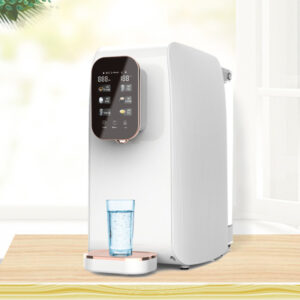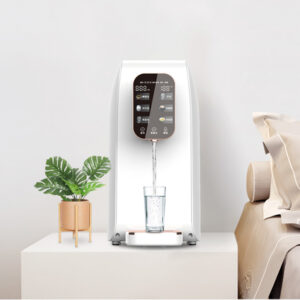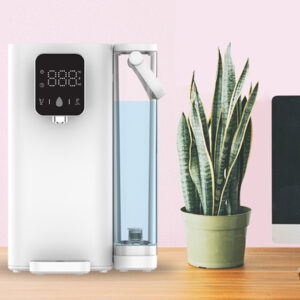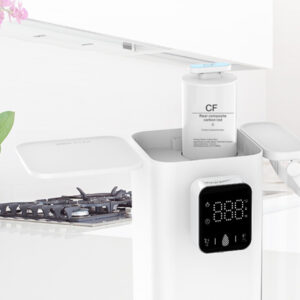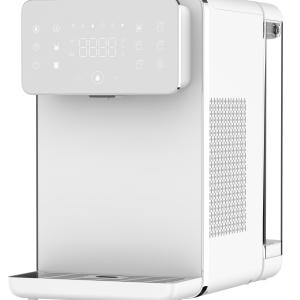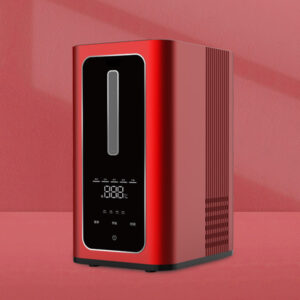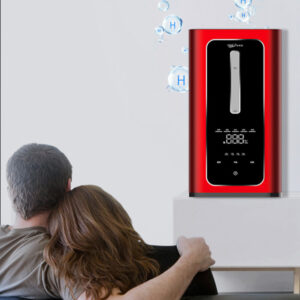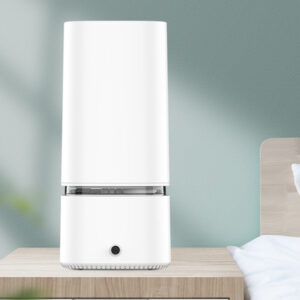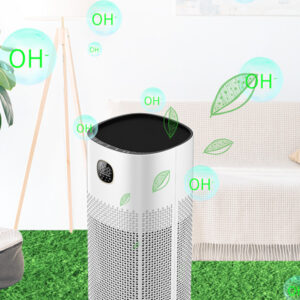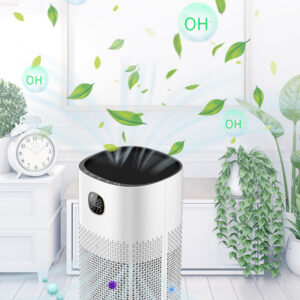How Does Hydrogen Inhalation Machine Work
How Does Hydrogen Inhalation Machine Work
Introduction
In recent years, the field of alternative and complementary medicine has seen a surge in interest surrounding molecular hydrogen therapy. At the heart of this emerging trend is the hydrogen inhalation machine, a device designed to generate and deliver pure hydrogen gas for users to inhale. These machines promise a range of health benefits, from reducing oxidative stress and inflammation to supporting overall wellness. But how exactly do they work? This article delves into the mechanics, components, scientific principles, benefits, and safety aspects of hydrogen inhalation machines, providing a comprehensive overview for those curious about this innovative technology.
Molecular hydrogen (H₂) is the smallest and lightest molecule in the universe, consisting of two hydrogen atoms bonded together. Unlike other gases used in medical contexts, such as oxygen or nitrous oxide, hydrogen is non-toxic and has been studied for its potential therapeutic properties since the early 2000s. The concept gained traction after a groundbreaking 2007 study published in Nature Medicine, which demonstrated hydrogen’s ability to selectively neutralize harmful free radicals without interfering with beneficial reactive oxygen species (ROS). Since then, research has expanded, with clinical trials exploring its applications in conditions like chronic inflammation, metabolic disorders, and even neurological diseases.
Hydrogen inhalation machines make this therapy accessible by producing hydrogen gas on-demand, allowing users to breathe it in through a nasal cannula or mask. These devices vary from compact home units to more robust clinical models, but their core function remains the same: to safely generate and administer hydrogen gas. As of 2025, with ongoing advancements in electrolysis technology and nanomaterial delivery systems, these machines are becoming more efficient and user-friendly. This article will break down the inner workings of these devices, drawing on scientific literature and practical insights to explain their operation in detail.
The appeal of hydrogen therapy lies in its simplicity and purported safety. Unlike pharmaceutical interventions that target specific pathways, hydrogen acts as a broad-spectrum modulator, influencing cellular processes without causing significant side effects. However, understanding how the machine works is crucial for users to maximize benefits and ensure safe usage. In the following sections, we’ll explore the components, step-by-step mechanism, underlying science, health advantages, and precautions associated with hydrogen inhalation machines.

What is Molecular Hydrogen Therapy?
Before diving into the machine itself, it’s essential to grasp the foundation of molecular hydrogen therapy. This therapeutic approach involves administering H₂ to the body, where it interacts with cellular processes to promote health. Hydrogen therapy can be delivered through various methods, including drinking hydrogen-rich water (HRW), bathing in HRW, injecting hydrogen-rich saline (HRS), or inhaling hydrogen gas—the focus of this article.
Inhalation is one of the most direct and efficient delivery methods because it allows hydrogen to enter the bloodstream rapidly through the lungs. Once inhaled, H₂ diffuses quickly across cell membranes due to its small size, reaching organs and tissues where it can exert its effects. Studies have shown that inhalation at concentrations of 2-4% is safe and effective for conditions like acute lung injury and chronic obstructive pulmonary disease (COPD).
The therapeutic mechanisms of hydrogen are multifaceted. Primarily, it acts as a selective antioxidant, neutralizing harmful ROS such as hydroxyl radicals (•OH) and peroxynitrite (ONOO⁻), which are implicated in oxidative stress—a key factor in aging and many diseases. Unlike traditional antioxidants like vitamin C, hydrogen does not disrupt beneficial ROS involved in cell signaling. Additionally, H₂ modulates inflammation by inhibiting proinflammatory cytokines (e.g., IL-1β, IL-6, TNF-α) and pathways like NF-κB and NLRP3 inflammasome. It also regulates apoptosis (programmed cell death), promoting it in cancer cells while inhibiting it in healthy ones, and enhances energy metabolism by protecting mitochondria and increasing ATP production.
Hydrogen therapy has been applied to a wide array of health conditions. For instance, in cardiovascular diseases, it reduces oxidative stress and improves vascular function in hypertension and myocardial injury. In neurological disorders like Alzheimer’s and Parkinson’s, it provides neuroprotection by reducing neuroinflammation and apoptosis. Respiratory benefits include alleviating asthma and COPD symptoms through anti-inflammatory effects. Metabolic disorders such as non-alcoholic fatty liver disease (NAFLD) and insulin resistance see improvements in lipid metabolism and insulin sensitivity. Even in cancer, hydrogen enhances chemotherapy efficacy while mitigating side effects like nephrotoxicity.
Other delivery methods complement inhalation. HRW is convenient for gastrointestinal issues, while HRS injections are used for acute conditions like ischemia-reperfusion injuries. Emerging nanomaterial-assisted delivery, such as hydrogels or nanoparticles, offers targeted release for specific tissues. However, inhalation stands out for its rapid absorption and potential for higher concentrations, making it ideal for systemic effects.
The rise of hydrogen therapy is backed by hundreds of studies, with clinical trials confirming its efficacy in real-world settings. For example, hydrogen inhalation has improved glycemic control in type 2 diabetes patients and reduced blood pressure in hypertensives. As research evolves, hydrogen is positioned as a preventive tool, potentially modulating gut microbiota to influence gut-brain and gut-liver axes.
Components of a Hydrogen Inhalation Machine
A hydrogen inhalation machine is a sophisticated yet compact device, typically the size of a small humidifier, comprising several key components that work together to produce, purify, and deliver hydrogen gas safely. Understanding these parts is vital to appreciating the machine’s functionality.
The core component is the electrolysis chamber, where water is split into hydrogen and oxygen gases using an electric current. Most modern machines employ proton exchange membrane (PEM) technology, which uses a specialized membrane to separate hydrogen ions, ensuring high purity (up to 99.99%). Some models may use alternative methods like metal-acid reactions, but electrolysis is preferred for its reliability and safety.
Water reservoir: This holds distilled or sterile water, essential for the electrolysis process. High-quality machines require chemical-free water to avoid contaminants.
Purification system: After generation, hydrogen gas passes through filters to remove impurities, ensuring it’s safe for inhalation. This includes dehumidifiers and catalysts to eliminate any residual oxygen or byproducts.
Delivery system: Users inhale via a nasal cannula, mask, or mouthpiece. Adjustable flow rates (measured in ml/min) allow customization—consumer models offer 150-300 ml/min, while clinical ones reach 1400 ml/min for therapeutic efficacy.
Control panel and electronics: Includes timers, concentration selectors, and safety sensors to monitor gas purity and prevent overheating. Some advanced models feature pulse or continuous modes.
Power supply: Typically AC-powered, with batteries for portability in some units.
These components are housed in a durable, lightweight casing, making the machine user-friendly for home or clinical use. Maintenance involves regular cleaning of filters and reservoirs to ensure longevity and safety.
How It Works: Step-by-Step Mechanism
The operation of a hydrogen inhalation machine can be broken down into a series of precise steps, ensuring efficient and safe delivery of hydrogen gas.
Step 1: Water Loading and Preparation. The user fills the reservoir with distilled water. The machine’s electronics initialize, checking water levels and system integrity.
Step 2: Electrolysis Process. An electric current is applied to the water in the PEM chamber. Water molecules (H₂O) dissociate: 2H₂O → 2H₂ + O₂. The PEM membrane allows hydrogen protons to pass through, separating pure H₂ from oxygen. This generates hydrogen at concentrations suitable for inhalation (typically 2-4%).
Step 3: Purification and Dilution. The raw hydrogen is filtered to achieve 99.99% purity. Dilution occurs immediately to minimize explosion risks—safe machines use direct or during-generation dilution methods. Oxygen is vented or used in mixed gas modes.
Step 4: Delivery and Inhalation. The purified gas flows through the cannula at a set rate. Users inhale for sessions lasting 30-60 minutes, allowing H₂ to absorb into the bloodstream via the alveoli.
Step 5: Absorption and Action. Once in the blood, H₂ diffuses to tissues, neutralizing ROS and modulating pathways like Nrf2 for antioxidant effects.
Step 6: Shutdown and Maintenance. The machine auto-shuts off, with indicators for filter replacement.
This mechanism ensures rapid, targeted therapy, with hydrogen’s short half-life meaning effects are felt quickly but require regular sessions.
Scientific Basis and Health Benefits
The science behind hydrogen inhalation rests on H₂’s unique properties as a therapeutic gas. It selectively reduces oxidative stress, a root cause of many pathologies, by neutralizing harmful radicals without affecting cellular signaling. Anti-inflammatory effects involve downregulating cytokines and shifting macrophage polarization.
Health benefits are extensive. In respiratory diseases, it alleviates lung injury and COPD. For metabolic issues, it improves insulin resistance and lipid profiles. Neurological benefits include cognitive enhancement and neuroprotection. Athletic performance sees reduced fatigue and faster recovery. Anti-aging effects stem from cellular protection.
Clinical evidence supports these, with trials showing safety and efficacy in diverse populations.
Safety Considerations and Precautions
Hydrogen inhalation is generally safe, with no significant adverse effects in studies. However, use reputable machines to avoid explosion risks—opt for PEM models with proper dilution. Consult doctors if pregnant or with conditions. Maintain devices regularly and use distilled water.
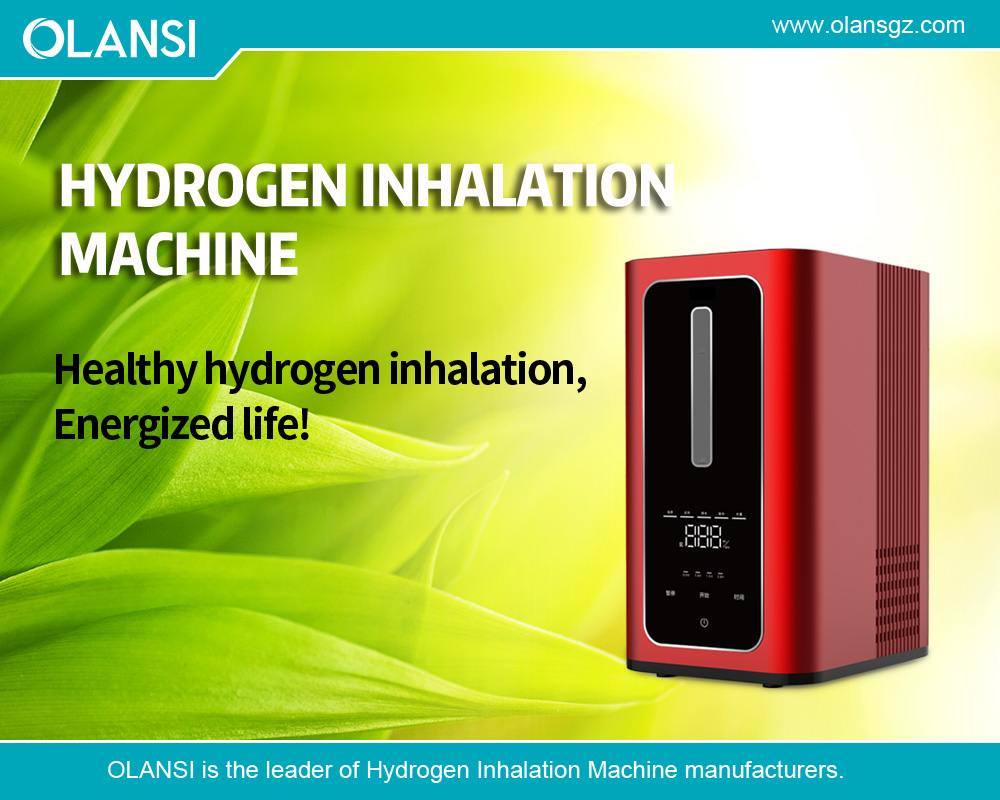
Conclusion
Hydrogen inhalation machines represent a promising frontier in health technology, working through electrolysis to deliver therapeutic H₂. With benefits spanning multiple diseases and a strong safety profile, they offer a non-invasive wellness option. As research advances, their role may expand further.
For more about how does hydrogen inhalation machine work, you can pay a visit to Olansi at https://www.olansgz.com/what-is-the-best-hydrogen-inhalation-machine/ for more info.



